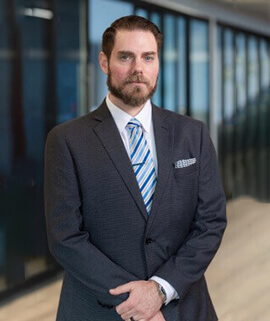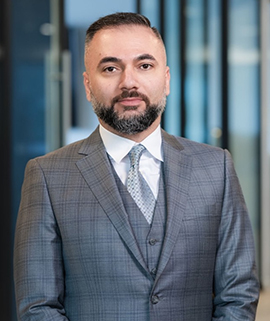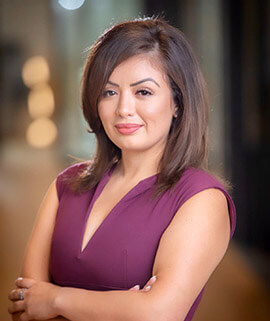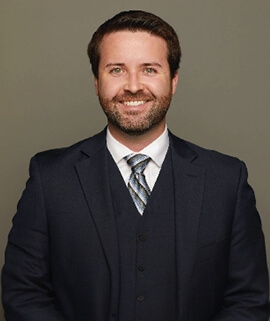Pedestrian Accident Attorney
Pedestrian Accident Attorney
- Locations of Pedestrian Accidents
- Causes Of Pedestrian Accidents
- Injuries In Pedestrian Accidents
- Legal Information
- Procedure After A Pedestrian Accident
- Value Of A Pedestrian Accident Lawsuit
- Sample Verdicts
- Statute Of Limitations To File A Claim For A Pedestrian Accident
 Over the past few decades, car accidents have declined and fewer individuals have died in such incidents. There were over 12,000 fewer deaths from 2003 to 2013 alone. However, this does not translate to pedestrians, who have steadily made up more and more of traffic fatalities. There continue to be over 4,500 pedestrian accidents per year. Regardless, in recent years, more pedestrians have taken to alternative modes of transportation, such as bicycles, Uber/Lyft and other rideshare options, motorized scooters, and more. Public transportation is still just as common, though, and the relative cheapness of vehicles has caused many to invest in cars. Yet we still see the same number of pedestrians get hurt.
Over the past few decades, car accidents have declined and fewer individuals have died in such incidents. There were over 12,000 fewer deaths from 2003 to 2013 alone. However, this does not translate to pedestrians, who have steadily made up more and more of traffic fatalities. There continue to be over 4,500 pedestrian accidents per year. Regardless, in recent years, more pedestrians have taken to alternative modes of transportation, such as bicycles, Uber/Lyft and other rideshare options, motorized scooters, and more. Public transportation is still just as common, though, and the relative cheapness of vehicles has caused many to invest in cars. Yet we still see the same number of pedestrians get hurt.
Nearly three-fourths of all pedestrian accidents happen in urban areas. This is not a surprise, given that the majority of the population is located in major cities and metropolitan areas where there are hundreds of thousands of individuals, and therefore, hundreds of thousands of vehicles.
In nearly 70% of pedestrian accidents, pedestrian accidents happen away from intersections and crosswalks. Pedestrians may cross in the middle of the road or come out behind parked cars, or they may not look where they are going when cars are exiting lots. This means that drivers are more often than not unaware of where a pedestrian will be or show up from. To make matters worse, 72% of the accidents happen in the dark. This can range from 4 p.m. in areas that practice Daylight Savings Time to 6 a.m. Pedestrians do not have lights like cars do and will likely see the vehicle before the drivers see them. It is also harder to make out pedestrians if they are wearing dark clothing or if they are trying to cross in an area that has no street lights. Individuals who died in pedestrian accidents were 46 years old on average, while those who were merely injured were 10 years younger on average. In all pedestrian accidents, alcohol was reported as being used by both the drivers and the pedestrians. Nearly 50% of alcohol was imbibed by a driver.
Complete a Free Case Evaluation form or call (855) 339-8879.
If you wish to avoid becoming another statistic, you should always proceed with caution at crosswalks or when you’re on foot. Take note that cars have a harder time escaping from potentially dangerous situations, and that pedestrians are at great risk when walking in heavily populated areas that do not have many marked crosswalks.Locations of Pedestrian Accidents
 Pedestrians can be injured almost anywhere there are vehicles. As long as there are negligent drivers nearby, there will be injuries to pedestrians. Because the majority of accidents happen at non-intersections, it pays to understand why. Pedestrians may not always want to cross at intersections or crosswalks; they may park across the street from a restaurant and simply wait for a break in traffic. This is dangerous, however, because pedestrians do not have the right of way at non-marked crosswalks.
Crosswalks are also common locations for accidents, especially in areas that have a lot of foot traffic. There may also be accidents in parking lots and parking structures at buildings, businesses, or venues.
Schools also are a hotspot for pedestrian accidents. Many children exit school buses and run inside; others will play on school grounds after the day is over. Some will dart out from behind cars at recess. Young children are often unaware of the risks that come with being near traffic, especially due to their small sizes.
Pedestrians can be injured almost anywhere there are vehicles. As long as there are negligent drivers nearby, there will be injuries to pedestrians. Because the majority of accidents happen at non-intersections, it pays to understand why. Pedestrians may not always want to cross at intersections or crosswalks; they may park across the street from a restaurant and simply wait for a break in traffic. This is dangerous, however, because pedestrians do not have the right of way at non-marked crosswalks.
Crosswalks are also common locations for accidents, especially in areas that have a lot of foot traffic. There may also be accidents in parking lots and parking structures at buildings, businesses, or venues.
Schools also are a hotspot for pedestrian accidents. Many children exit school buses and run inside; others will play on school grounds after the day is over. Some will dart out from behind cars at recess. Young children are often unaware of the risks that come with being near traffic, especially due to their small sizes.
Causes Of Pedestrian Accidents
Although there are times when the pedestrian can be blamed for the accident, such as by walking into the middle of the road, crossing on a green light, or wearing dark clothing, there are numerous instances in which the driver can be held responsible. Because drivers in California must yield to pedestrians, breaking the law can carry fines. Some of the causes of pedestrian accidents include:- Turning without looking, which is by far the most common cause, as some individuals may turn into intersections or crosswalks without checking for pedestrians, or they may be looking at oncoming traffic to be safe
- Running stop signs and red lights, which would make pedestrians who feel safe crossing be put at risk; drivers may be speeding through the signs and not be able to stop in time
- Drunk driving, which impairs drivers in many ways, including lowered reaction speed, hazy vision, fatigue and sleepiness, decreased inhibition, and more
- Pulling out without looking, since most drivers tend to exit driveways and parking lots rather speedily if they see no cars in the distance, but do not consider the sidewalks and who may be walking on them
- Poor weather, which can include fog, rain, snow, and sleet; it makes it very difficult for drivers to keep control of their vehicles, not to mention visibility is generally greatly decreased
- Vehicle defects, such as faulty brakes or broken lights and windows, which cause the accidents to happen; these defects may be due to a manufacturing error wit he vehicle or occur due to wear and tear and time from driving – in which case, the driver should have been aware of the issue and brought it in to be fixed
Complete a Free Case Evaluation form or call (855) 339-8879 today.
 It can be difficult to ascertain who was negligent in an accident or what can be done to prevent future accidents from occurring. There are many courses of action, all of which are likely true to some degree. Pedestrians should be more observant of basic laws and crossing procedures, while drivers should be more careful and be on the lookout for pedestrians more often. Cities should ensure that there are enough safety features for pedestrians as well, such as adequate lighting and competent signals and traffic lights.
A few ways that pedestrians can be better protected and for accident rates to decrease can include:
It can be difficult to ascertain who was negligent in an accident or what can be done to prevent future accidents from occurring. There are many courses of action, all of which are likely true to some degree. Pedestrians should be more observant of basic laws and crossing procedures, while drivers should be more careful and be on the lookout for pedestrians more often. Cities should ensure that there are enough safety features for pedestrians as well, such as adequate lighting and competent signals and traffic lights.
A few ways that pedestrians can be better protected and for accident rates to decrease can include:
- Increased number of refuge islands
- Sidewalk and street repair
- Increased overpasses and underpasses
- More efficient countdowns on stop lights
- Improved lighting and signals
- Flashing crosswalks
Injuries In Pedestrian Accidents
Car accidents result in thousands of deaths each year and millions of injuries. The reason that the ratio of injuries to deaths is so skewed, though, is because of the safety features present in vehicles. Cars have seat belts, air bags, cushions, automatic brakes, and more to protect people when accidents happen. A high speed impact with a large vehicle, a rollover accident, or another incident can, of course, increase the rate of injuries. Pedestrians, however, do not have the luxuries that passengers and drivers have. If pedestrians are hit by vehicles, they do not have any protection at all. They can be run over, flung over the roof and hood of the car, sent off to the side, or get sent into oncoming traffic. Simple car accidents like fender benders may not result in any physical harm whatsoever, but the same kind of accident involving a pedestrian can yield major injuries. Some of the damages possible from pedestrian accidents include:- Traumatic brain injuries
- Concussions
- Head injuries
- Neck damage
- Spinal cord injuries
- Herniated or bulging discs
- Internal organ damage
- Broken ribs
- Dislocated shoulders
- Broken bones
- Nerve damage
- Torn muscles and ligaments
- Disfigurement and scarring
- Sprains and strains
- Crushing injuries and puncture wounds
- Severed limbs and digits
- Lacerations and abrasions
- CRPS
- Paralysis
- Quadriplegia
- Coma
- Death
 Some of the injuries may be permanent or long lasting. Radiating pain and constant stiffness can remain even years after the injuries happened. Treatments and rehabilitation may only get you so close to a full recovery. Further, you could need assistive products like wheelchairs and prosthetics to live, or you may need to completely restructure your home to accommodate you.
Some of the injuries may be permanent or long lasting. Radiating pain and constant stiffness can remain even years after the injuries happened. Treatments and rehabilitation may only get you so close to a full recovery. Further, you could need assistive products like wheelchairs and prosthetics to live, or you may need to completely restructure your home to accommodate you.
– Redondo Beach pedestrian accident attorney – Torrance pedestrian accident lawyer – Glendale pedestrian accident lawyer – Lancaster pedestrian accident lawyerThe presence of injuries in a pedestrian accident opens up many legal doors for you. They will become the most important part of your case.
(855) 339-8879 with a legal representative about your situation now.
Legal Information
There are various bits of legal information that you will need to know if you wish to file a pedestrian accident lawsuit. For example, you must be able to prove that you were a victim of negligence if you want to file a personal injury claim. To do this, you must show that you were owed a duty of care, that the duty of care was breached by the responsible driver, that the breach of duty resulted in an accident, and that the accident caused you physical harm. If you were not physically harmed, you won’t be able to file a personal injury claim. Instead, you will only be able to pursue damages for lost income and lost property. It can be much easier filing this type of claim, though, as insurance agents will be less likely to negotiate hard if you do not ask for a large sum of money – which usually happens when there are medical expenses and pain and suffering damages on the line.
If you were not physically harmed, you won’t be able to file a personal injury claim. Instead, you will only be able to pursue damages for lost income and lost property. It can be much easier filing this type of claim, though, as insurance agents will be less likely to negotiate hard if you do not ask for a large sum of money – which usually happens when there are medical expenses and pain and suffering damages on the line.
Procedure After A Pedestrian Accident
It can be extremely confusing to be in a pedestrian accident. The impact may leave you dazed and severely wounded, and you could not know the first thing to do once you return to consciousness if you were knocked out. You may be too severely injured to complete every bit of preparation for a lawsuit, which is acceptable – your first goal should always be to get the necessary medical assistance and treatment you need. The reason medical help is so important is that you do not want to suffer any more injuries than you already have. If you do not notice certain injuries, they could manifest later and cause further pain. The paramedics or doctors can examine you and determine if you have any damages you may not feel. Adrenaline will mask a lot of pain, so it is important that you get treated by a doctor. Additionally, if you were injured and you do not get medical help, the insurance company can claim that you were lying about the cause of your damages or about the extent of your injuries. The agent can say that you were not as hurt as you said since you waited to get treatment. To avoid this pitfall, you should go to the doctor as quickly as you can after an accident.Learn more about your options for compensation by calling (855) 339-8879.
You should then make sure to take as many pictures as you can of the injuries you received. You can also keep a copy of the medical notes and hospital bills to show that you received a certain treatment for the damages and that you were present at the hospital. It will also come in handy to have pictures of the scene of the accident, especially if there were environmental factors at play. Pictures of the vehicle can also be used to give further proof. If there were eyewitnesses or bystanders who saw the incident occur, they can provide you with their testimony as to what happened. Their statements can be added to your evidence package to support you, as they may offer testimony that is different from the defense. There may be surveillance footage or security videos available from a nearby business or company if the crash happened on or near private property. You can add these videos to your evidence package. You should also take pictures of the responsible driver and get his contact information and insurance details. This will allow you to file a claim against the correct entity. In some situations, though, you may be struck by a car and the driver may flee the scene. You will then have to go through your own insurance company to possibly pursue damages, which can be very difficult. Lastly, it may be in your best interest to seek out an attorney. You may not have any legal experience, which can work against you in a lawsuit. You should not try to handle your insurance claim by yourself if you have never filed a claim or if you intend to pursue additional damages; the agent can quickly throw your claim away and not give you any opportunity to plead your case. A lawyer can handle all the legal legwork for you while you focus on recovering.Value Of A Pedestrian Accident Lawsuit
 The value of your lawsuit will be handled by an insurance agent. There is no surefire way to determine how much money you will win or how much your damages are worth – every accident is different, and thus, every lawsuit is different as well. The simplest and smallest detail can be enough to sway the jury in favor of the defense, while another can cause your claim to be worth over $1 million.
The insurance agent responsible for handling your case will consider a few factors when determining the value and settlement offer. He will first look at how injured you were, such as how severe the damage was and how impactful it was on your life and career. If you were permanently injured with a severed limb and your entire life was turned upside down, resulting in a switch of careers or a need to pursue disability, your case value may skyrocket. However, simple damages that heal quickly and have no lasting impact may not motivate an insurance agent to offer any compensation at all.
The insurance agent will consider, to a lesser extent, your age and job type. He will, however, look at how negligent you were or how responsible you were in the accident. If you could be partially blamed for the incident, your case value will likely decrease. The agent will do all he can to show that you were likely at fault as well in an effort to downplay the injuries you received or the responsibility of his client.
Once he has calculated the worth, he will make an offer. This offer can be countered and negotiated on by a lawyer. An attorney will try to secure you the best deal available for your case.
For injured pedestrians, there should be no agreement to less than what is deserved. You should pursue ample compensation for the following damages:
The value of your lawsuit will be handled by an insurance agent. There is no surefire way to determine how much money you will win or how much your damages are worth – every accident is different, and thus, every lawsuit is different as well. The simplest and smallest detail can be enough to sway the jury in favor of the defense, while another can cause your claim to be worth over $1 million.
The insurance agent responsible for handling your case will consider a few factors when determining the value and settlement offer. He will first look at how injured you were, such as how severe the damage was and how impactful it was on your life and career. If you were permanently injured with a severed limb and your entire life was turned upside down, resulting in a switch of careers or a need to pursue disability, your case value may skyrocket. However, simple damages that heal quickly and have no lasting impact may not motivate an insurance agent to offer any compensation at all.
The insurance agent will consider, to a lesser extent, your age and job type. He will, however, look at how negligent you were or how responsible you were in the accident. If you could be partially blamed for the incident, your case value will likely decrease. The agent will do all he can to show that you were likely at fault as well in an effort to downplay the injuries you received or the responsibility of his client.
Once he has calculated the worth, he will make an offer. This offer can be countered and negotiated on by a lawyer. An attorney will try to secure you the best deal available for your case.
For injured pedestrians, there should be no agreement to less than what is deserved. You should pursue ample compensation for the following damages:
- Medical expenses to cover your surgery fees, hospitalization fees, anesthesiologist costs, ambulatory transportation costs, physical therapy fees, medication, and future medical procedure expenses
- Property damage if any of your personal items were lost or broken in the incident
- Missed income if you were unable to go to work for some time, as well as future lost wages if you could not return to work or had to take a leave of absence for recovery or additional medical help
- Pain and suffering damages to cover emotional traumas, such as PTSD, anxiety, fear, psychological anguish, and more
- Wrongful death damages, which are handed out in the event that a family member or loved one passes away; you can receive funeral and burial fees, loss of relations, loss of consortium, loss o expected savings an income, reimbursement for pre-death medical bills and pain and suffering, and more
- Punitive damages, which are handed out when a party acts with gross negligence or intentionally tries to harm you; this damages are meant to punish the defendant and can result in ample extra compensation, but many juries and judges do not view punitive damages as anything more than excessive treatment, so only a skilled lawyer will be able to win them for you
Call (855) 339-8879 or complete a Free Case Evaluation form today.
Sample Verdicts
 You can consider the results of other cases when trying to figure out how much your lawsuit might be worth and what you should be entitled to. You can see what other parties requested and what they received; it may give you an idea of the possible earnings that are available for your case. However, you should be aware that a lot of the high settlements you see in the news are handled by competent and expert attorneys, and not by the plaintiffs themselves.
You can look below to read some sample pedestrian accident verdicts.
You can consider the results of other cases when trying to figure out how much your lawsuit might be worth and what you should be entitled to. You can see what other parties requested and what they received; it may give you an idea of the possible earnings that are available for your case. However, you should be aware that a lot of the high settlements you see in the news are handled by competent and expert attorneys, and not by the plaintiffs themselves.
You can look below to read some sample pedestrian accident verdicts.
Kim v. Gray
In Mi Sun Kim v. James Patrick Gray, Los Angeles County Department of Public Works and County of Los Angeles, Kim was hit by a pickup truck that was operated by a driver working for the County of Los Angeles.
Kim was crossing a road that had eight lanes – three in each direction and two turning lanes. She proceeded through most of the road but was hit when she was coming to the final lane. Gray had made a U-turn in one of the left turn lanes and struck her. He claimed that he did not see her as she was walking and only noticed that she was there once he felt the impact on his car.
California law dictates that drivers must yield to pedestrians who lawfully cross the road if the drivers are making left turns or U-turns. It was admitted that Gray was working at the time of the incident.
As a result of the crash, Kim suffered trauma to her body, including a herniated disc, lacerations, edema, amnesia, and more. She could not remember the incident. She also suffered constant pain in her neck and numbness in her extremities. Kim required an epidural injection and her medical professional stated that she would likel need additional injections to counter the pain.
In response, the defense stated that her injuries were present prior to the accident and that they were chronic and degenerative. They also stated that she never notified anyone of the back pain, but an audio transcription proved otherwise.
Eventually, a $325,000 settlement was agreed upon, to be paid out by the Los Angeles Department of Public Works. Kim was covered for her past and future medical bills and her pain and suffering damages.
Find out more about how we can help you. (855) 339-8879 with a representative now.
Lee v. Kwak
In Seo Young Lee v. Song Pok Kwak, Lee was hurt when Kwak turned left and hit him in the crosswalk. Lee, a 90 year old man, was walking within a crosswalk to proceed to the other street when Kwak struck him. Lee was diagnosed with a mild traumatic brain injury after two weeks in two hospitals. He also was hurt with a fractured leg, a torn meniscus, and a disc injury to his back. Lee could not walk after the accident, and he had a pre-existing condition of Alzheimer’s that was purported to have worsened, resulting in the need for assisted living. He was sent to a nursing facility due to the onset of damages. Kwak admitted liability and did not contend the case. The insurance company tendered the policy limit of $250,000 and settled prior to trial.
Dizon v. Deng
In Jamie Dizon v. Meirong Deng, a young high school girl was struck by a driver on Halloween. Dizon was walking across the street in the evening while wearing a black costume. She was also under the influence of alcohol at the time of the incident. As she was crossing, she was hit by Deng; she rolled onto the roof and fell to the street. The counsel claimed that Deng was driving too quickly and did not properly watch where she was driving. They also reported that, given it was Halloween, there were numerous kids around tht would warrant Deng paying careful attention. Dizon said that she entered the intersection and had made it to the opposing lane when she was hit.
The defense, however, had its own accident reconstruction witness and an independent witness to provide additional testimony to Deng’s. Deng stated that Dizon ran into the road from the middle of the street and did not proceed across the crosswalk normally. She said that the darkness of the night, the dark clothing, and the intoxication of Dizon all played a factor in the accident. She could not reasonably stop in time.
The independent witness claimed that Deng was traveling well below the speed limit and that there were not hundreds of kids present on the road; rather, there were only a few individuals present. Additionally, someone warned Dizon not to proceed and verbally yelled for her to wait.
The collision left Dizon with various injuries. She suffered a disc injury, a fractured pelvis, and a traumatic brain injury. She claimed that her grades and cognitive abilities were imapcted after the accident. After surgery on her back, she claimed that she would likely need additional treatment and rehabilitation, and that the damages all prevented her from resuming her normal life and activities. The jury decided that Deng’s negligence was not a primary cause of the accident. Dizon’s intoxication, choice of clothing, and overall negligent behavior contributed to the incident more. They denied the requested $70,000 in damages.
Morales v. Harris
Obdulia Morales v. Jefferey William Harris featured a woman who was hit on the street. Both parties disputed the facts of the event.
Morales stated that she was crossing the street and was hit by Harris as he was turning. He did not check to make sure no pedestrians were nearby. As a result of the incident, she suffered a sprained neck and a brain injury. Consequent to the accident, she complained of dizziness, cognitive issues, headaches, and balance problems. She also stated that she requires additional medical treatments and injections to deal with the pain and stiffness in her neck.
Harris, stated that Morales did not cross at the crosswalk at all and had tried to move in front of his vehicle while he was turning right and looking left. The defense argued that her delayed medical treatment indicated that she did not have the injuries to the degree that she claimed, and regardless, basic treatments would have resolved her issues.
In the end, the jury sided nearly unanimously with Harris and the defense. Morales’ request of more than $3 million was denied. [ca-sidebar id=”22189″]Statute Of Limitations To File A Claim For A Pedestrian Accident
The statute of limitations is the amount of time you have to take legal action after an incident or an injury. This time limit is in existence because parties should not be held accountable for damages after an unreasonable amount of time. For example, if the only injuries and damages suffered in a car accident were sprained ankles and wrists and cosmetic damage to the vehicle, it would be unfair to request payment and coverage 20 years after the incident. The damages would likely have healed up and the car may have been traded in or not even be used anymore.
In California, there is a 2-year statute of limitations for personal injury lawsuits. This limit allows the parties to adequately gather evidence and prepare their cases. The plaintiff can ensure that the evidence he collects does not become corrupted or lost over time, for instance. Further, the memories of witnesses will be sharper and less foggy. The further back an accident happened, the more likely it is that key witnesses will forget important details or not be able to perfectly recall what happened.
Learn more about your legal options (855) 339-8879 with a representative now.
If you do not file a lawsuit within this two-year limit, you will be barred from pursuing compensation and will not be able to take legal action. It is important that you pay careful attention to the dates involved with your claim so you do not potentially miss out on your chance at compensation. There are a few scenarios in which the statute f limitations can be extended, however. The most common features underage plaintiffs. Since minors cannot sue, they would need a guardian to take the legal reigns for them. If they do not wish to sue, though, they can wait until they turn 18 years old; the statute of limitations would begin from the day they turn legal age.
In other cases, plaintiffs are left so severely wounded that they are unable to sue. They may have cognitive issues, be left in a coma, or have an anxious or mental breakdown. This can compromise the way they think and live life. Therefore, the statute of limitations would be suspended until life returns to normal or health, whether physical or mental, picks back up.
Further, the defendant must be present in California if you intend to sue him. If he leaves the state to go on vacation or to move elsewhere, the statute of limitations would be suspended until he returns. This could take any number of months, but you would not be disbarred from your rightful pursuit of legal action if you cannot actually sue the responsible party.
Pedestrian Accident Attorney
– Sidewalk Injury Lawyers
– Crosswalks Pedestrian Accident
– Driveway Pedestrian Accidents
– Pedestrian Right of Way Laws
– Pedestrian Accident FAQ
– Accident Facts & Statistics
– Statute of Limitations for Pedestrian Accident Lawsuits
– Pedestrian Accident Laws
– What do to after a Pedestrian Accident
– Gruesome Pedestrian Accidents
– Skateboarding Accident Attorney
– Bus Pedestrian Accident
– Value of a Pedestrian Accident Lawsuit
– Jaywalking Accidents
– Parking Lot Pedestrians accident
– Left-Hand Turn Pedestrian Accident
– Illegal U-turn Pedestrian Accident
– Top 10 Causes of Pedestrian Accidents
– Average Pedestrian Accident Settlement
– Redondo Beach pedestrian accident attorney
– Torrance pedestrian accident lawyer
– Glendale pedestrian accident lawyer
– Lancaster pedestrian accident lawyer
– Inglewood pedestrian accident lawyer
WE FIGHT
YOU WIN!
Se Habla Español


